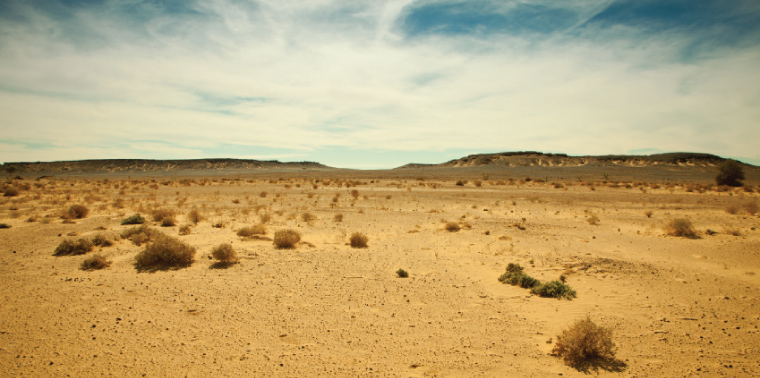When approaching a critical transition, a slightly unusual season can be followed by dramatic changes in plant cover. At one time, these changes would have reverted back to normal, but instead they linger. Lines on graphs that chart the system become jagged. The center no longer holds.
“Up until [recently], we thought that regime shifts were essentially unpredictable. They were like accidents waiting to happen, and would catastrophically come out of nowhere. There was no possibility of predicting them or dealing with them in advance,” says Steve Carpenter, a professor and early warning sign expert at the University of Wisconsin-Madison.
Carpenter says the availability of early warning indicators could provide enough advance notice to take action and prevent crossing the threshold. The best examples come from systems that have been studied for decades, where researchers can compare new readings against historical baselines. But such thorough datasets are the exception, not the rule.
“For many circumstances, the time needed to detect variance is too long,” says Walker. “You cross the threshold before you’ve detected it.”
A Critical Time Saver
Given that detecting thresholds could take decades, researchers are looking for a shortcut — namely, indicators that can be applied to any arid region and require the ecological equivalent of a thermometer under the tongue.
It’s at least possible the patterns could someday serve as a universal indicator of tipping points.
The most promising of these is changing vegetation patterns. The beginning of a grassland’s transition to desert is marked by localized outbreaks of relatively sparse shrubs. Where soil once held by the grasses’ roots had acted like a sponge, water no longer penetrates. Wind blows faster over bare ground, piling eroding earth at the base of shrubs, which require more of the system’s water.
As the shrubs spread, the desertification accelerates. Patches of grass shrink and become even more vulnerable to local change. They suffer “micro-extinction events.” Bare soil between bushes is dark, where the grassland soil had been beige. Ground-level temperatures rise, making water evaporate even faster. Soil is blown into the air. If enough ultra-fine dust particles enter the local atmosphere they disrupt rain formation, which requires water molecules clustering around particles of larger size.
Scientists believe this phenomenon is responsible for the unusually long Sahel drought.
According to studies in the Sahel, Africa’s Kalahari Desert and rangelands around the Mediterranean, all this produces telltale patterns of vegetation patch size and shape. In a healthy system, these can be plotted on an orderly curve. As the likelihood of transition increases, data points fall off the line. Aberrations can be seen by the naked eye.
“The spatial indicators we’re working at are the only class that requires a snapshot in time, meaning that spatial patterns suffice to know that one is approaching a regime shift. That’s what makes it so appealing,” says Max Rietkerk, a geoscientist at the Netherlands’ Utrecht University.Researchers have tentatively observed similar spatial patterns in other ecosystems, from bogs to tundra and coral reefs. It’s not certain yet whether they indicate critical transition as clearly as they appear to in grasslands. But it’s at least possible the patterns could someday serve as a universal indicator of tipping points.“I hope there are universal early indicators. If we have to figure this out for every system, then we’re up a creek without a paddle,” says Aaron Ellison, a forest ecologist at Harvard University. “If we have to spend 30 years on a system that we want to manage in some way, they’ll all be gone before we have a chance.” ![]()
Ensia shares solutions-focused stories free of charge through our online magazine and partner media. That means audiences around the world have ready access to stories that can — and do — help them shape a better future. If you value our work, please show your support today.
Yes, I'll support Ensia!
